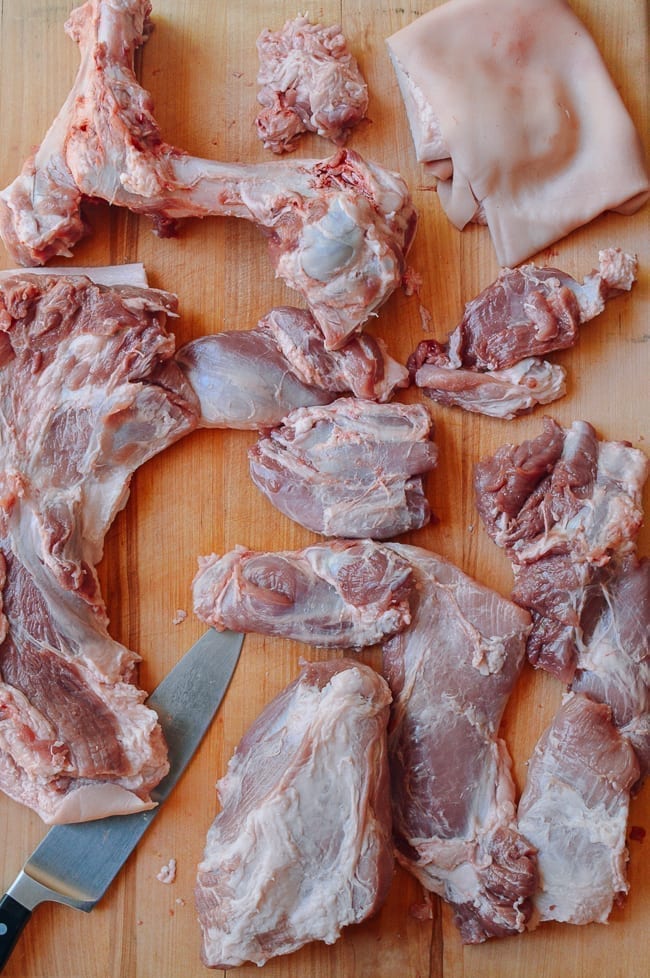How To Cut Whole Pork Shoulder
5.0
(5)
Your folders
Your folders
Prep Time: 20 minutes
Total: 20 minutes
Author : Bill

Ingredients
Export 1 ingredients for grocery delivery
Instructions
Step 1
In your kitchen sink, carefully remove the pork shoulder from the packaging. There is almost always excess liquid to drain off. Gently rinse the pork shoulder (avoid splashing water around, and be sure to disinfect the area afterwards). Pat dry with a paper towel and transfer the pork shoulder to a large cutting board.
Step 2
Position the pork shoulder with the large skin side down and the broad side facing away from you. You can see the inside bone poking through both ends.
Step 3
Find the seam/muscle membrane that runs from one end of the bone to the other and use your fingers to separate and pull the meat apart. Carefully make small cuts in the seam until the membrane pulls apart.
Step 4
Continue to cut along the bone from the broad end of the pork shoulder over to the tapered end to fully expose it. Note that the bone is not straight, but bent at an angle. Gently pull the meat apart, and cut around and down the lengths of bone. Pulling the meat creates tension, which makes cutting through the membrane around the bone easier. Take your time with it!
Step 5
Soon, you’ll see that you’ve sort of “flattened” the pork shoulder, and the bone will be clearly exposed. Continue to cut around the bone until you can get your fingers under it. Next, lift the bone and slide your knife tip under it. Cut under and around the bone to separate it from the meat.
Step 6
Now grip the detached end of the bone and continue to cut the meat around the bone until the bone is completely separated from the meat. Lifting the bone up and letting the neat hang down creates tension between the meat and bone that makes cutting the meat away from the bone easier.
Step 7
Find other muscle membranes, and cut between the membrane/seams to separate the pieces of meat. You’ll find that the thickest pork chunk on the broad end of the roast works well for stir fries, since it is quite lean. Cut along the seam of this large chunk until you get to the skin, and continue to cut and separate the meat from the skin until the large pork chunk is detached. (Before stir-frying, trim off the muscle membrane and fat to ensure you get tender slices.)
Step 8
Continue to find and cut along membranes and seams until you have separated most of the pork chunks from the middle, and near the narrow part of the pork on the leg. The medium pieces can be cut into chunks for stewing, used to make ground pork, or even butterflied for char siu.
Step 9
Now you should have skin and fat on one side and a thinner cut of fat and meat that resembles pork belly on the other side. Cut off the portion that has only skin and fat and reserve.
Step 10
Now you’ll be left with what resembles pork belly––a long piece with layers of fat, meat and skin––along with some remaining chunks of pork. Remove the pork belly piece, and continue cutting along the seams to separate the remaining pork chunks.